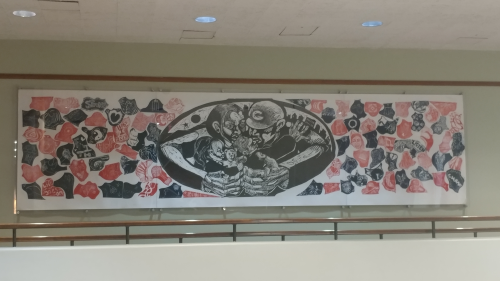When I first enrolled at SUNY Geneseo, and even when I first registered for this course, I was skeptical, but curious, about the relationship between the sciences and the humanities. A class I took with Dr. McCoy last semester caused me to reconsider my skepticism; however, as I entered this class, The Art of Steve Prince, my vision was still clouded by the assumptions I had previously generated regarding the intersection, or lack thereof, between the sciences and the humanities. Indeed, I had always assumed that science and the humanities were distinctly separate realms with no direct connection or relationship with each other. While I was beginning to warm to the idea that science and literature might be intimately and intrinsically connected, I was not ready to see that there is science in art and art in science. But, as this course draws to a close, I find that my views have shifted tremendously and that I am now incapable of visualizing art without science and science without art. This transformation was made possible by many things, particularly, the work of Steve Prince, the lectures and lessons of the supporting faculty, and the blogging process.
Furthermore, my thinking across barriers with respect to academic disciplines mirrored the thinking that I and my classmates did across cultures, communities, and individuals. This class helped me to see past the exclusionary labels assigned to academic disciplines and unearth their similarities and differences in a way that connects and celebrates each respective discipline. In a similar fashion, this class, and the thinking it inspired, encouraged me to, in the words of Steve Prince, “look more and name less” and recognize that human beings, though each bearing different creeds and cultures, though each occupying different communities and spaces, are essentially united, not in spite of their differences, but in a way, because of such differences, as well as the similarities that lie beneath these differences.
Continue reading “Crossing Boundaries Once Again”

